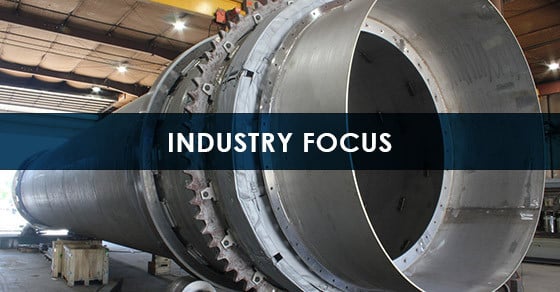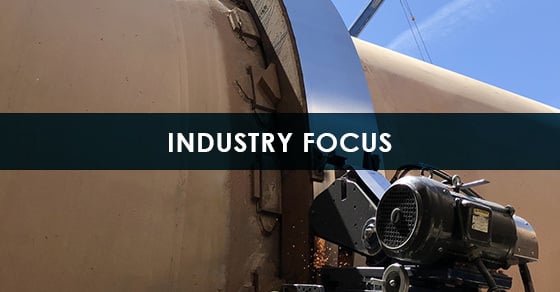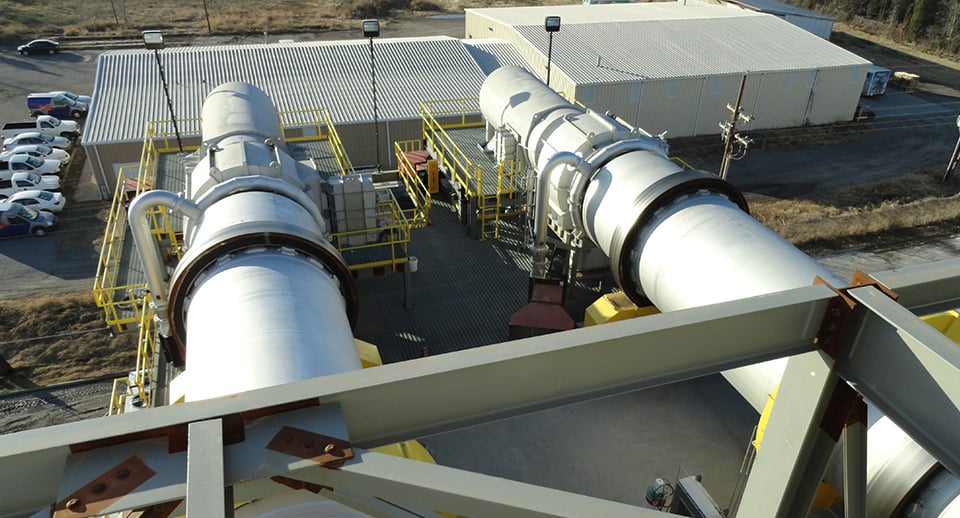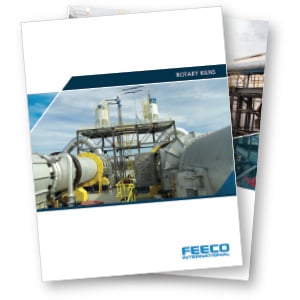Minimize Waste With a Rotary Kiln Incinerator
Rotary kiln incineration is a thermal treatment that serves as a valuable tool in waste management efforts, particularly when it comes to hazardous wastes, helping to mitigate environmental risks associated with disposal, while also significantly reducing the volume of wastes.
WASTE INCINERATION AT ITS BEST
Rotary kilns have become increasingly favored for carrying out industrial and hazardous waste incineration in recent years because they are so versatile. These diverse machines are able to accept a wide range of materials and are capable of treating solids, liquids, and sludges simultaneously, negating the need for separate systems to handle different waste types – a major advantage for waste handlers.
Rotary kiln incinerators also offer the much-needed high-capacity capabilities required by the growing waste industry, with the potential to treat up to 15,000 lb/hr (or more) around the clock.
Rotary kiln incineration systems are frequently used to treat:
- Ammunitions
- Medical wastes
- Industrial wastes
- Chemical wastes (solvents, paints, etc.)
- Fumes & volatile organic compounds (VOCs)
- Hazardous wastes (toxic liquids, oil-contaminated waste, etc.)
- Petrochemicals
- Pharmaceutical wastes
- Solid wastes and sludges
THE ROTARY KILN INCINERATION PROCESS
A rotary kiln incinerator is a type of industrial furnace consisting of a horizontal, rotating cylinder through which waste materials are passed. The waste feed is heated using either combustion gas (direct-fired configuration), or external heating (indirect-fired configuration) to a predetermined temperature and processed at a predetermined rotation speed.
Most rotary kiln incinerators are of the direct-fired type, meaning the material and combustion gasses are in direct contact. Indirect kilns may be used in specialized applications requiring a more controlled atmosphere. While indirect kilns are typically more costly, they have the benefit of a smaller air pollution control system, as the exit gas flow rate is lower than the direct-fired configuration.
A rotary kiln incinerator breaks down or decomposes material into simple compounds via complete combustion, converting wastes to an ash residue and thereby significantly reducing waste volume.
To achieve this, a direct-fired, refractory-lined rotary kiln uses a co-current (parallel) configuration, in combination with an oxygen-rich environment. This treatment, which typically takes place at temperatures ranging from 760° to 980°C (1400° to 1800°F), oxidizes the material, rendering any infectious or hazardous components inert.
The incinerator operates on a continuous basis, with residence time typically ranging from one to two seconds, depending on the characteristics of the waste.
Rotary Kiln Incinerator Design
Incinerator design requires thermal processing expertise and careful attention to detail to ensure a safe, reliable system. Our extensive experience allows us to build upon this, offering ample opportunity for customization to suit your processing goals.
To increase the sustainability of the system, as well as improve operational economics, a waste heat boiler is often incorporated to recover waste heat and produce usable steam, or to facilitate energy recovery for electricity generation.
When a portion or all of the feedstock is in liquid form, a liquid injection system is incorporated into the unit.
Instrumentation and control packages are available to automate start-up and shutdown procedures, as well as help operators to monitor and adjust the operation as needed.
The Benefits of Co-Current Incineration
While some manufacturers may promote a counter-current kiln configuration (referring to the material flow in relation to the gas flow), the co-current or parallel configuration is by far more efficient.
In a co-current setting, the incoming material meets with the hottest gasses near the kiln inlet. This quickly evaporates any moisture in the feedstock, eliminating the requirement for a pre-drying step. The mid-section of the kiln then combusts the volatile components and the remainder of the kiln burns off the carbon fraction.
The co-current setup also has the benefit of simplifying the feed system configuration and the secondary combustion chamber setup.
Flue Gas & Emissions Handling
Proper off-gas handling is an essential aspect of incineration system design. This setup varies depending on the specific waste stream characteristics, as well as local regulatory requirements. All systems throughout the world, however, are mandated to have a secondary combustion chamber.
Following the rotary kiln, the secondary combustion chamber burns off any remaining volatiles, operating at around 1000° – 1100°C (1800° – 2000°F) with a residence time of around two seconds.
In addition to contributing to emissions control, the secondary combustion chamber also provides an alternative injection point for liquid wastes with a high heating value (i.e., fuel grade), allowing operators to offset conventional fuel costs. Similarly, lower heating value liquid wastes can also be used as a tempering stream to hold back the kiln temperature and keep it from running away.
A typical exhaust gas handling system consists of a secondary combustion chamber followed by an evaporative cooler. The evaporative cooling step reduces the gas temperature to around 160°C (320°F), allowing it to be passed through a fabric filter baghouse with lime and activated carbon injection to remove particulates, HCl, SO2, heavy metals, or dioxins/furans.
Following the baghouse, a wet scrubbing system consisting of a quench/packed tower further polishes the gas, removing any residual pollutants. This is followed by an induced draft (ID) fan and discharge stack.
In cases where particulate emissions are heavily restricted, the system may also incorporate an electrostatic precipitator after the packed tower.
Another common requirement is a selective non-catalytic reactor (SNCR) or selective catalytic reactor (SCR) to reduce NOx emissions behind the packed tower (or electrostatic precipitator).
Establishing emissions system requirements is typically handled by an environmental consultant that can advise on local regulations.
CUSTOM ROTARY KILN INCINERATORS
The rotary kiln provides by far the most flexibility for successfully processing a wide range of waste materials. FEECO rotary incinerators are custom engineered around the parameters of the specific application for optimized performance, operational reliability, and equipment longevity. Our incinerators are built to stringent quality standards that allow us to offer comprehensive mechanical warranties.
We can also provide the entire incinerator plant system, including waste feed and storage equipment, as well as air pollution control and waste heat recovery systems.
INCINERATOR SERVICES
In addition to custom equipment design and manufacturing, our services include:
OPERATOR TRAINING
Our extensive experience in processing hundreds of materials and derivatives leaves us unmatched in advanced thermal processing expertise. Our Process Engineers travel the world to train our customers on their unique production lines.
PARTS & SERVICE SUPPORT
The FEECO Customer Service Team provides comprehensive services to keep your equipment and process running reliably and efficiently. This includes:
- Process optimization
- Audits and inspections
- Spare parts
- Maintenance procedures
RESOURCES
INCINERATION ARTICLES

Rotary Kiln Incinerators on the Rise in Waste Management
Incineration has become an essential tool in managing industrial and municipal wastes more sustainably, as long-landfilled materials such as hazardous medical …

Best Practices for Maintaining Rotary Kiln Incinerators During COVID-19
Incinerators across the United States and abroad are preparing for a tidal wave of medical waste from the COVID-19 pandemic, with …



